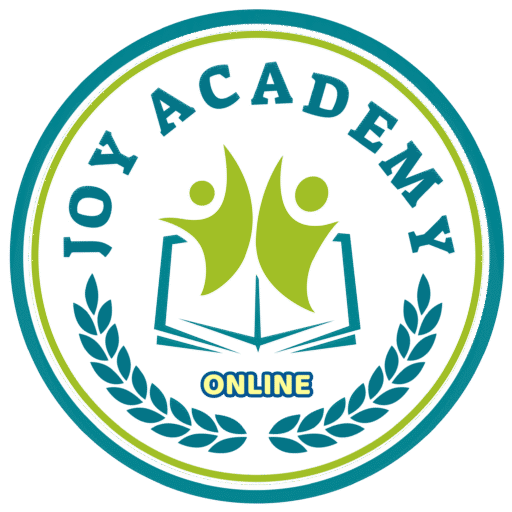Joy Academy Online offers a rigorous, faith-rooted, and globally informed curriculum designed to cultivate truth-seeking, self-awareness, and a life of meaning and impact. Each grade level builds upon foundational skills while deepening intellectual inquiry and character formation.
Grade-Level Structure
Middle School: Grade 5-8
High School: Grade 9-12
Core subjects:
- Language Arts
- Math
- Science
- Social Studies
- Chinese Computer
- Project Based Learning (PBL)
Middle School Learning Focus: Critical thinking, academic writing, worldview development, STEAM, Character building
High School Learning Focus: Learning focus: Advanced analysis, college readiness, worldview development, personal calling, STEAM, Character building
Curriculum Design Principles
Standards-Aligned: Based on NGSS, Common Core, and faith-integrated learning outcomes
Bilingual & Accessible: Core materials are presented in both Chinese and English, and bilingual staffs, including teaching assistants, homeroom teachers, academic director, and student life director, are available to ensure full participation and understanding for families whose primary language is Chinese.
Character-Driven: Every subject integrates moral and spiritual formation
Flexible & Personalized: Students may pursue individualized learning paths with teacher guidance
Joy Academy Online offers a vertically aligned curriculum that grows with the learner – from foundational literacy and numeracy in middle grades to advanced inquiry and personal calling in high school. Each state is designed to nurture truth-seeking, self-awareness, and a life of meaning and impact.
Daily Schedule
| Period | Time | Notes |
| 1 | 8:30-9:20 | |
| 2 | 9:30-10:20 | |
| 3 | 10:30-11:20 | |
| 4 | 11:30-12:20 | |
| 12:20-13:00 | Lunch break 午休 | |
| 5 | 13:00-13:50 | |
| 6 | 14:00-14:50 | |
| 7 | 15:00-15:50 | |
| 8 | 16:00-16:50 |
Assessment Types & Grading Rubrics
Formative & Summative Assessment
Joy Academy Online utilizes both formative and summative assessments to support student growth. Formative assessments – such as quizzes, reflections, and teacher feedback – are used throughout the learning process to guide instruction and identify areas for improvement. Summative assessments – such as final projects, exams, and presentation – evaluate student mastery at the end of a unit or term.
Rubrics & Grading Scales
All major assignments and assessments are evaluated using clear rubrics that define expectations across multiple dimensions – such as content accuracy, critical thinking, creativity, and communication. Grading scales are transparent and aligned with international benchmarks, allowing students and families to understand performance levels and areas for growth.
Weighting & Feedback Mechanisms
Each course outlines the relative weight of homework, projects, participation, and exams in the final grade. Teachers provide timely, constructive feedback to help students reflect, revise, and improve. Feedback is delivered through digital platforms and parent reports to ensure consistent communication.
Progress Reports & Transcripts
After the midterm exams, students receive regular progress reports that highlight academy performance, character development, and learning outcomes. Official transcripts are issued at the end of each semester and include subject grades, attendance records, and teacher comments. These documents support student transitions to higher education and reflect holistic growth.
Grading Policies
Each academic year has two semesters, and each semester has two quarters. Students will receive a grade and teacher comments for every course at the end of each quarter. All grades and comments will reflect the student’s performance in all aspects of the class. Only semester grades appear on student transcripts.
Absences and Assessment
If absent for any reason, students must complete all missed work. Students are responsible for obtaining assignments from teachers and requesting any assistance in completing them. In general, for each school day missed, students are permitted to complete these assignments within a reasonable time, as permitted by teachers. A reasonable time is defined as a one-week period.
At the discretion of teachers, students who miss any kind of assessment will be offered a chance to complete that assessment or complete an alternative one.
Grade Scale 绩点计算标准
Our grading system uses a different weighting for traditional academic and honors as well as highest-level AP classes. This system is approved by all our students’ colleges and universities.
| Grade | Percentage Range | GPA Value | Honors GPA Value | Earns Credits | |
| Minimum | Maximum | ||||
| A | 93.0 | 100 | 4.0 | 4.5 | Y |
| A- | 90.0 | 92.99 | 3.7 | 4.2 | Y |
| B+ | 87.0 | 89.99 | 3.3 | 3.8 | Y |
| B | 83.0 | 86.99 | 3.0 | 3.5 | Y |
| B- | 80.0 | 82.99 | 2.7 | 3.2 | Y |
| C+ | 77.0 | 79.99 | 2.3 | 2.8 | Y |
| C | 73.0 | 76.99 | 2.0 | 2.5 | Y |
| C- | 70.0 | 72.99 | 1.7 | 2.2 | Y |
| D+ | 67.0 | 69.99 | 1.3 | 1.8 | Y |
| D | 65.0 | 66.99 | 1.0 | 1.5 | Y |
| D- | 60.0 | 64.99 | 0.7 | 1.2 | N |
| F | 0.0 | 59.99 | 0.0 | 0.0 | N |
Honor Roll & High Honor Roll
Each grade level will have two honor roll lists: Honor Roll and High Honor Role. The GPA will be used to determine the qualification for the Honor Roll. Students with a GPA of 3.2 to 3.7 will be placed on the Honor Roll list. Students with a 3.7 and above will be placed on the High Honor Roll list.
Graduation Credit Requirements
| Department/Subject | Suggested Credits |
| English | 4 |
| Chinese | 4 |
| Math | 4 |
| Science | 4 |
| Social Sciences | 4 |
| PBL | 4 |
| Computer Studies | 1-2 |
| Electives | 2-3 |
| Credits Totals | 27-29 |
